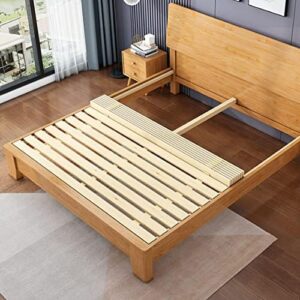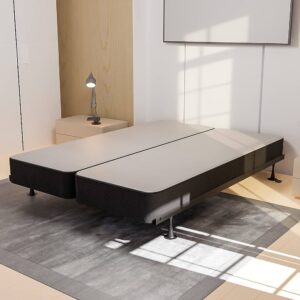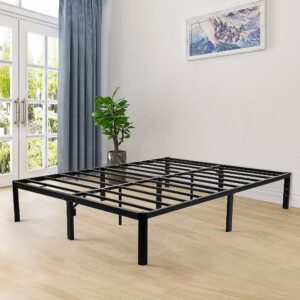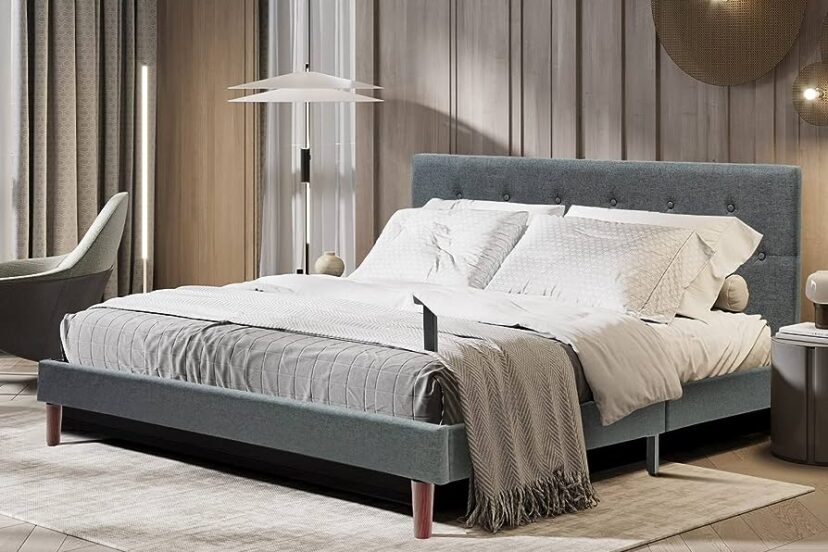Bed Bases: More Than Just Support
Bed bases are bed essentials that are often overlooked in favor of plush mattresses. But understanding the importance of a firm foundation for sleep can change your nocturnal experience. So let’s begin this quest of discovery.
Bed Bases What Are They?
When we think of beds we often think of the mattress first. But underneath that cozy layer is just as important: the bed base. Bed bases are the understructures that hold our mattresses together. They aren’t there to hold the mattress off the floor. These foundations will help determine how comfortable and durable your sleep setup will be.
Bed bases have an aesthetic role as well as a functional role. They define your bedroom style, with styles ranging from simple platforms to elaborate frames. With the advances in design, many modern bed bases also offer added features such as built-in storage or adjustable functionalities, combining form and function.
How to Choose the Right Bed Base
A harmonious sleep environment is achieved not just by the mattress but also the foundation it rests upon. The base affects both the durability of the mattress and the quality of sleep. Compatibility between the mattress and its base is important when creating a sleeping space.
Impact on Mattress Life: The longevity and health of a mattress are directly related to the base quality. A sturdy, ventilated base can extend the life of a mattress by providing support without sagging and allowing air flow. In contrast, a mismatched or poor-quality base can accelerate wear and tear, causing lumps and sagging that may require an early replacement.
Effects on Sleep Quality: Beyond the lifespan of a mattress, the bed base affects sleep quality. A solid foundation can reduce disturbances by reducing motion transfer, which is especially important for those sharing a bed. A squeaky or unstable base can wake you up at night and disturb sleep. Additionally, certain bed bases with ventilation can help reduce heat retention, especially with memory foam mattresses.
The time spent understanding and selecting the right bed base can result in nights of quality sleep.
Different Types of Bed Bases
When you begin your journey into the realm of bed bases, it’s quickly evident that choices abound. This might look like an overwhelming array at first. But each type is designed for specific needs, aesthetics and mattress types. Knowing the differences between base types can help you make an informed decision, giving your mattress the best foundation and you the sleep you deserve.
Slatted Bases
Slatted bed bases are among the most popular bed bases for modern sleepers. These bases have wooden or metal slats running down the width of the frame. The gap between these slats allows for maximum airflow, which may be particularly useful for memory foam or latex mattresses that retain heat. Beyond ventilation, slatted bases provide a balanced support system that adapts to weight distribution and comfort. The flexibility of the slats might also increase the lifetime of the mattress itself, because they absorb a sizable proportion of the pressure, decreasing damage on the mattress itself.

Box Springs
Box springs have a long history in bedding. Originally designed to raise and provide a flat, stable base for innerspring mattresses, box springs consist of a wooden frame housing springs covered with fabric. This spring system provides a double layer of springiness when used in conjunction with innerspring mattresses. The result? More comfort and longer mattress life. While their popularity has declined slightly with the introduction of newer base types over the years, many still enjoy box springs for the bounce they provide and the traditional look they offer.

Platform Bases
Platform bases are sleek and functional. This type of base is usually made of wood or metal and has a flat or closely slatted surface without a box spring inside. The sturdiness of platform beds provides even support for just about any mattress type, from innerspring to foam. Another feature is the potential for storage. Many platform bases have built-in drawers, which are great for those short on space. Platform bases have a modern, low profile that complements contemporary decor in bedrooms.

The Best Way to Pick the Right Base for Your Bed
The decision to choose the right bed base requires more than a glance at the aesthetics. It requires an understanding of the subtle functionalities of each base type. Think of the bed base as the unsung hero who supports your mattress, giving it stability and comfort. The key is matching your needs with the features offered by different bed bases. Start by examining your bedroom size, the mattress you own and your aesthetic preferences. It also helps to consider the base’s expected lifespan and warranties.
And while many think about the mattress for a good night’s sleep, the bed base can make or break sleep quality. A good base complements the features of the mattress and gives it durability and comfort. Thus, deciding on the right base should be a time – investment for long-term sleep satisfaction.
Identifying Your Needs
Before you buy a bed base, take time to evaluate your needs. Have you got back pain? If so, an ergonomic base might be ideal. Are you looking for storage solutions? Some bases have built-in drawers or storage space underneath for your belongings. The best base may also depend on the weight and type of your mattress. For example, a heavy memory foam mattress needs a solid base with little gaps between the sheets.
Not least important is the room size. Some want a huge base for a huge master bedroom while others need something more compact for an apartment. Remember, your base should help your room look and feel more spacious than crowded.
Material Considerations
The market offers bed bases in various materials with different pros and cons. Wooden bases are strong and classic, but metal bases appear more modern and easier to maintain. Upholstered bases in fabric or leather add a touch of luxury. Consider the way you wish to create ambiance in your bedroom and just how much you want to invest on maintaining it.
In addition, determine the material quality. For example, sustainable hardwood bases last longer and are less likely to break. On the flip side, a few metal bases might need additional attention, especially if not rust-proof.
Budgeting for a Bed Base
We all want the very best of bed bases, but we all have budget constraints. You need to balance quality and affordability. High-end bases with advanced features or luxurious materials cost a fortune. But many mid-range options have good durability and comfort without breaking the bank.
Recall that a bed base is an investment in the long run. It might be worth stretching your budget a bit to get something more tough and more comfortable. But with research, you can find a base that meets your requirements and your wallet.
Care Tips for Bed Bases
Like any other piece of furniture, your bed base needs regular upkeep. For wooden bases, polish periodically to maintain the sheen. Metal bases may need checks for rust, especially in humid climates. Upholstered bases can use occasional vacuuming and occasional professional cleaning, especially if they are in lighter shades.
In addition, periodically check the base for wear, loose fittings or broken slats. Taking care of these issues early on can extend the life of the base and give your mattress a good foundation.
The Connection Between Base and Mattress
It’s a mutual relationship between the mattress and the base. While the mattress receives all the attention for comfort, the base quietly provides that comfort. A well-matched base can enhance the features of the mattress by providing extra support, airflow and even weight distribution. For example, memory foam mattresses have slatted bases to prevent heat retention, and innerspring mattresses love box springs.
Conversely, an improper base can shorten the life of a mattress and affect sleep quality. It isn’t just the mattress or the base but how they work together. Together, the two determine how you sleep. So, invest in one and consider the other.
FAQ: Top Questions on Bed Bases
Can any mattress fit in any bed base?
Although mattresses are flexible, be sure to check manufacturer guidelines for base compatibility to avoid unpleasant surprises.
How often should I change my bed base?
A properly maintained bed base will last more than ten years. But sagging, noise, or visible wear should prompt a reconsideration.
Which is superior: metal or wooden bed bases?
Both materials have distinct advantages. Metal provides durability and a modern look, and wood offers sturdiness with a classic touch.
But is a bed base necessary?
It is indeed! It provides additional support, extends mattress life and may improve sleep quality besides elevating your mattress.
Does the bed base affect sleep patterns?
Certainly! A bed base affects mattress performance, which can affect sleep depth, comfort, and quality of sleep.
In summary, while the focus is often on mattresses, a bed base is an unsung hero in your sleep ecosystem. Investing time in selecting the right one can redefine your nightly rest.
Related: Bed Frame for Adjustable Base: Maximizing Your Bedroom Comfort
Use the following resources to learn more about Bed Bases and frames:
https://en.wikipedia.org/wiki/Bed_base




